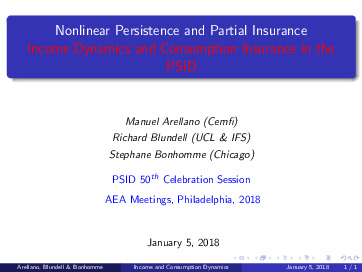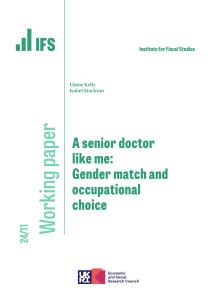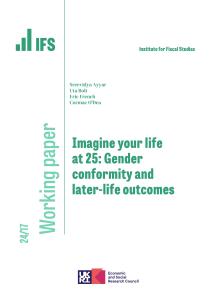We highlight the important role the PSID has played in the development of our understanding of income dynamics and partial insurance. We examine alternative ways of modeling income persistence and focus on the nonlinear nature of income shocks. We explore a new quantile-based panel data framework, in which the persistence of past income shocks is allowed to vary according to the size and sign of the current shock. We show this approach matches the data well and, exploiting the enhanced consumption and asset data in recent waves of the PSID, show it also has key implications for consumption insurance. We confirm the results on income dynamics using the extensive population register data from Norway. The approach is used to provide new empirical measures of partial insurance in which the transmission of income shocks to consumption varies systematically with assets, the level of the shock and the history of past shocks.
This presentation was given at the American Economics Association (AEA) and Allied Social Scientice Associations (ASSA) Annual Meeting in Philadelphia in January 2018.












